Archives
4 facts that reveal the antisemitism behind BDS
October 3, 2019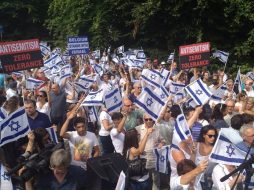
The BDS (Boycotts, Divestment and Sanctions) movement parades itself as a humanitarian, fact-based and impartial response to social injustice. In truth it’s a dangerous and misguided ideology fueled by hatred of Israel and the Jewish people. Here are a few facts that reveal the dark spirit of antisemitism lurking beneath the respectable facade of BDS.
Fact 1: BDS seeks the annihilation of Israel
No movement can seriously describe itself as peace-making and reconciliatory if it plots the destruction of one of the parties!
Yet this is exactly what BDS does. The movement tries to appeal to moderates by saying it seeks a Two State Solution and that its economic sanctions only apply to territories beyond the 1967 borders. But it doesn’t take much digging to discover the movement’s real objective: A One State Solution called Palestine.
Here are a few quotes from some of the leaders in the movement:
“The real aim of BDS is to bring down the state of Israel….That should be stated as an unambiguous goal. There should not be any equivocation on the subject. Justice and freedom for the Palestinians are incompatible with the existence of the state of Israel.” – Asad Abukhalil
“Our corporation boycotts all Israeli products and services, and encourages other institutions, companies and individuals to cease and avoid all economic, academic and cultural activity that supports the racist state of Israel until that state dissolves itself.” – Paul Larudee
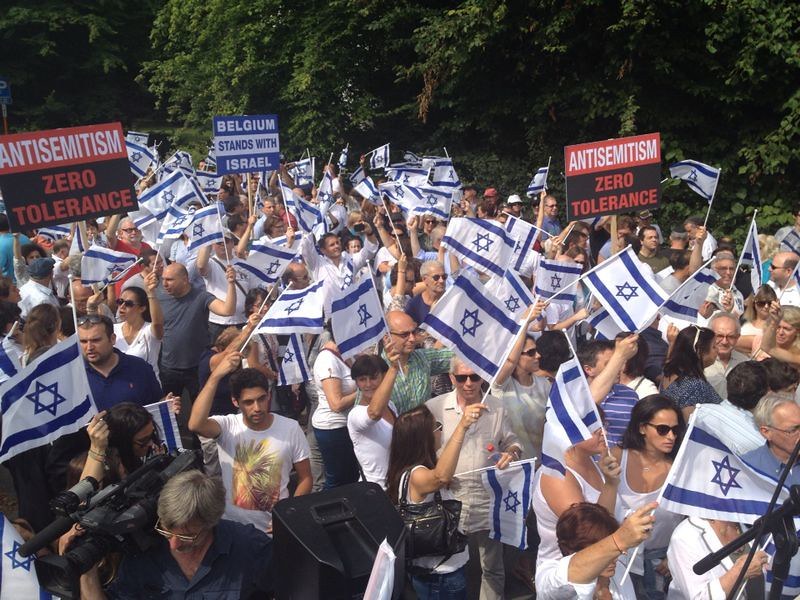
Fact 2: BDS isn’t interested in other areas of the world where there is injustice
If the BDS movement were really concerned with social justice, it would leave Israel alone and focus on nations with appalling and systematic human rights abuses, of which there are many. BDS doesn’t seem particularly concerned about China or Saudi Arabia, for example.
The movement’s obsessive preoccupation with Israel reveals that its real driving force is the hatred of Israel and not social justice.
Fact 3: The BDS movement doesn’t even help the Palestinian people
BDS claims to support the cause of the Palestinians, but it actually does more harm than good for ordinary Palestinian people.
BDS pressurizes Israeli business based in the West Bank, claiming that they are occupying stolen land and exploiting the Palestinian people.
In reality, these businesses provide employment to thousands of Palestinians and offer better salaries and work conditions than they would find in Palestinian-owned companies.
Fact 4: The German Parliament recently declared the BDS movement antisemitic
In May 2019, the German Bundestag passed a motion equating BDS with antisemitism and calling all government agencies to withdraw support from it.
The coalition of German parliamentary parties who brought forward the motion stated that the boycott of Israeli artists and products was “reminiscent of the most terrible chapter in German history” in which the Nazis outlawed trade with Jews.
Many other respectable organizations and human rights initiatives also refuse to work with the BDS movement because of its harmful antisemitic policies.
To conclude…
It is clear to see that, far from being an objective and thoughtful response, BDS is a hate-filled and self-contradictory movement. How can it be that such a vitriolic political campaign is given a platform and a voice across the world, and that so many people buy into its lies?
Arugot: Natural cosmetics from a troubled region
September 17, 2019
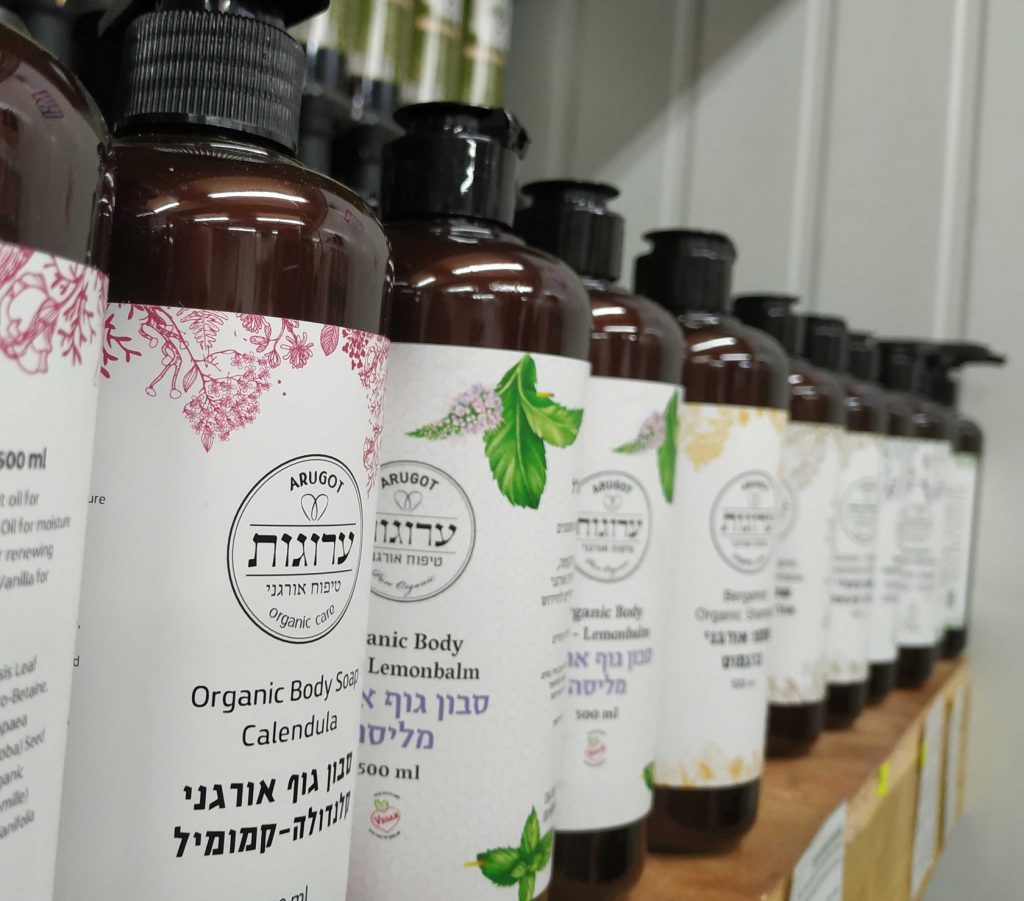
You probably noticed some special cosmetic products in our last package: an organic night cream and a citron serum made by the family-run business Arugot. Now we want to tell you a little about what makes these cosmetics so special, and about the incredible couple who make them…
Itai and Esther Lachman live in Netivot, a town in the Negev region of Israel, close to the Gaza border. So close, in fact, that they have just 15 seconds to make it to a bomb shelter or safe room when the sirens warn that rockets are coming from the Hamas-led Gaza Strip.
In recent times, those sirens have been very frequent. Netivot residents have become accustomed to living their lives on edge, knowing their activities could be interrupted at any moment, and being ready at all times to make the 15 second life-or-death dash to a safe place.
Yet, it is here, amidst a sometimes daily existence of rockets and sirens, that Itai and Esther have created a little oasis, designing and producing their all-natural, chemical-free cosmetic range.
The Arugot business was born out of the couple’s desire for a more natural lifestyle, free from the toxic chemicals today’s world is full of. They were already raising goats, chickens and growing their own vegetables, but Itai and Esther knew they had to address the chemical products they were using on their skin.
Today the Arugot range includes everything from chemical-free deodorants to sunscreen, and even diaper rash ointment. All the ingredients they use are high grade and strictly organic. The plants, flowers and seeds used in Arugot cosmetics are grown on an organic farm, and the fragrances are personally blended by Esther, who trained in herbal medicine and natural herbal cosmetics.
What’s more, Itai and Esther use their business to support other causes close to their hearts, including helping female survivors of violence and sexual abuse. At Arugot, they make a point of employing women who would otherwise struggle to find work.
It’s clear to see is that Arugot is not just surviving in the face of difficulty: it is growing, flourishing and helping many others at the same time. What is it about adversity that sometimes bring out the very best?
Ethnic cleansing? The truth about Arabs in Israel and Jews in the Arab world
August 30, 2019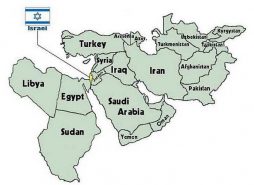
A common myth people believe about Israel is that the Jewish state is guilty of ethnically cleansing its Arab population.
A quick look at the facts tells a very different story:
Fact 1: There never was an independent nation of Palestine
Many think that prior to the creation of Israel in 1948, there was a flourishing independent country called Palestine with an Arab population dating back thousands of years.
This isn’t true. Before the First World War, the region known as Palestine was part of the Ottoman Empire, which included much of the modern-day Middle East. There was never a separate country called Palestine.
Nor did the people living in the region see themselves as distinctly Palestinian. Some described themselves as Syrian. Some were nomadic and moved between the different territories of the Ottoman Empire. The concept of Palestinian nationalism is something recent.
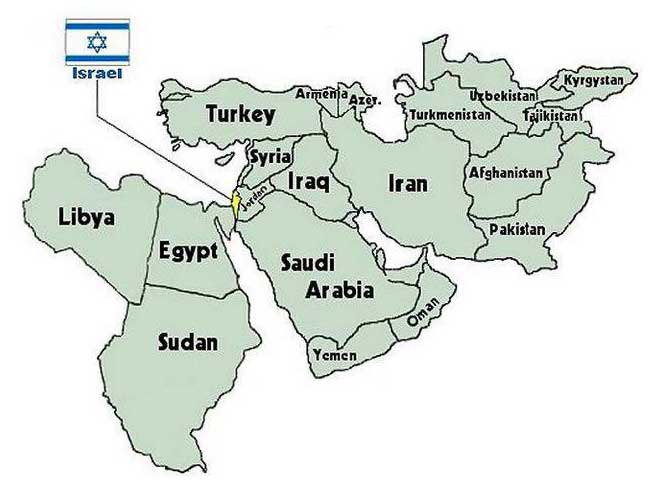
Fact 2: Many of the Arabs living in Israel in 1948 had not been there for long
Before the 20th century, Palestine wasn’t a particularly rich or desirable place to live, and it didn’t have a large population. Ottoman records show that in the year 1800, there were just 275,000 people living in the land.
This all changed in the twentieth century. Between 1922 and 1948, the Arab population of Palestine rose from around 670,000 to over 1,200,000. One reason for this growth was large-scale Arab immigration as the land became more prosperous.
It’s true that thousands of Arabs left Israel during the 1948 War of Independence, but it’s important to note that many of them had been in the land for less than a generation at the time.
Fact 3: The Arab population in Israel has increased since 1948
Since the establishment of Israel in 1948, the Arab population—far from being ethnically cleansed by the Jewish state— has risen dramatically. Even though 750,000 Arabs left Israel during the War of Independence, the total Arab population has still increased.
In 2019, the Arab Israeli population stood at nearly 2 million, compared to 1.2 million on the eve of Israel’s independence.
Fact 4: Nearly a million Jews were forced to flee Arab lands and Iran after 1948
We hear so much about the Palestinian refugees that few people realize there were also Jewish refugees from Arab nations after 1948.
Prior to the formation of Israel, there were thriving Jewish communities in Arab countries such as Morocco, Iraq and Yemen. Nearly all these Jews were forced to flee for their lives in the face of violent persecution after the establishment of Israel. These Jews left behind them property and possessions, which were never recovered.
Today, there are fewer than 5,000 Jews in the Arab world and Iran. This is a stark contrast to the Arab population in Israel that continues to grow and thrive.
So, is Israel guilty of ethnic cleansing? The facts reveal that the answer to this question is a loud and resounding NO!
Shechem
August 30, 2019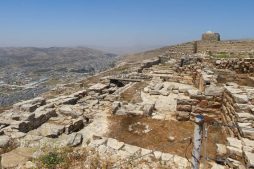
There are few places in Israel where the sense of injustice suffered by the Jewish community is felt more acutely than in Shechem.
The centuries-old attempt to erase Jewish history from this town has been so successful that many people today have never even heard the name Shechem. They only know about the Arab town called Nablus under the administration of the Palestinian Authority in the area where Jews are forbidden to set foot.
In fact, the name Nablus is a derivative of ‘Flavius Neopolis’ – the name the Romans gave Shechem in the first century as part of an attempt to destroy its Jewish identity.
The Jewish connection to Shechem dates back to the days when Abraham obeyed the Lord’s call and set out for the promised land. Shechem was the first place he stopped when he reached Canaan – as Israel was then called (Genesis 12:6). Later, Jacob bought a piece of land in Shechem and built an altar to the Lord (Genesis 33:18-20). This was the plot of land where Joseph was buried (Joshua 24:32).
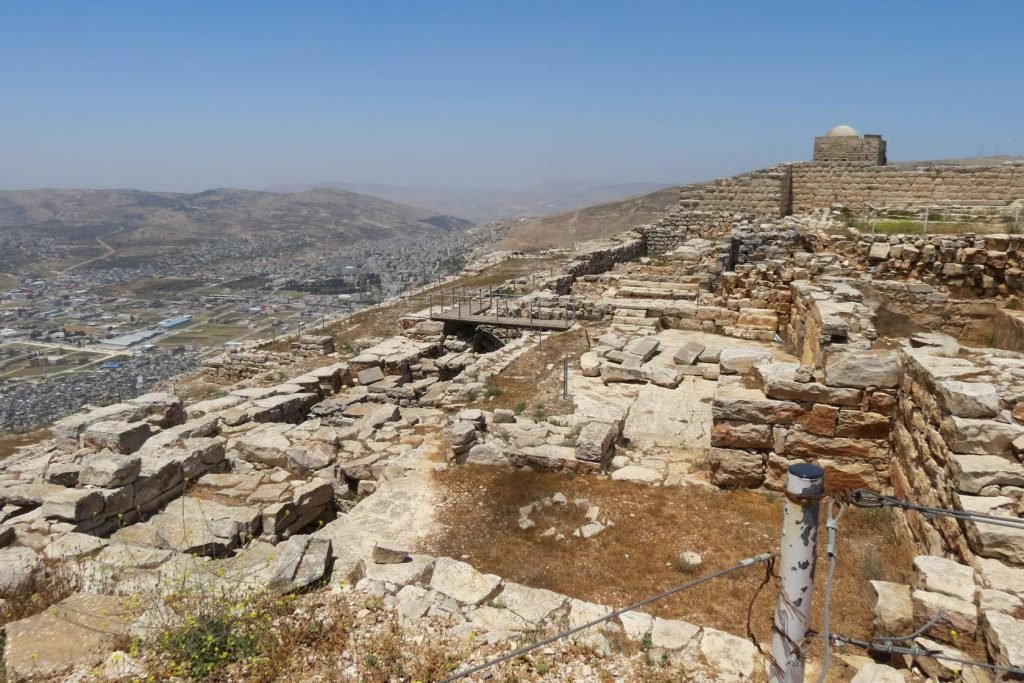
Over the centuries, the Jewish community in Shechem had periods of growth and decline, but Joseph’s Tomb remained a sacred Jewish site drawing many pilgrims. According to one of Israel’s top archeologists, the late Dr. Zvi Ilan, Joseph’s Tomb is “…one of the tombs whose location is known with the utmost degree of certainty and is based on continuous documentation since biblical times.”Shechem is a city historically known for Arab hostility towards Jews. This is one of the main reasons why the Jews returning to Israel at the end of the 18th century, fleeing Russian pogroms, never flourished in Shechem. In 1860, it was reported that six Jewish families tried to settle in the city but left almost immediately due to the constant stone-throwing from their Arab neighbors.
The violent Arab riots of 1929 and 1936 finally put an end to the Jewish presence in Shechem, and the struggling, impoverished Jewish families left in the city were forced to flee for their lives. No Jew has permanently resided in Shechem since.
Shechem was given over to the Palestinian Authority in 1995 as part of the Oslo Accords. Although it was agreed that Joseph’s Tomb would be preserved and remain in Jewish hands, just a few years later Palestinian terrorists broke into the site, burnt and desecrated it.
Today, any Jew wanting to pray at the ruins of Joseph’s Tomb must wait for one of the few organized pilgrimages that happen each year – at the dead of night, escorted by Israeli security forces.
It is a great tragedy for Jewish people that they cannot freely access and pray at one of their most sacred sites. In view of this, why are many still pushing for Israel to give up more holy and historic locations?
Jewish teenager stabbed to death by terrorists in Gush Etzion
August 13, 2019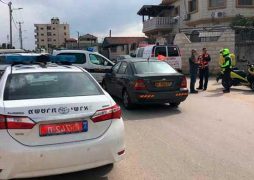
On Wednesday night, the 19-year-old son of one of our suppliers was murdered in cold blood by terrorists as he returned to his yeshiva in the Gush Etzion region.
Dvir Sorek—son of Rachel Sorek, one of our artisan jewelry makers—had been in Jerusalem the day he was killed. Always kind-hearted and quick to serve others, he had volunteered to buy books for his yeshiva rabbis on behalf of his classmates as an end-of-year gift.
Dvir never got to give his gift or see the smiles on his rabbis’ faces. On his way back from Jerusalem, before he reached the yeshiva, he became the latest victim of an evil, senseless terror attack. His body was found by the side of the road in the early hours of Thursday morning.
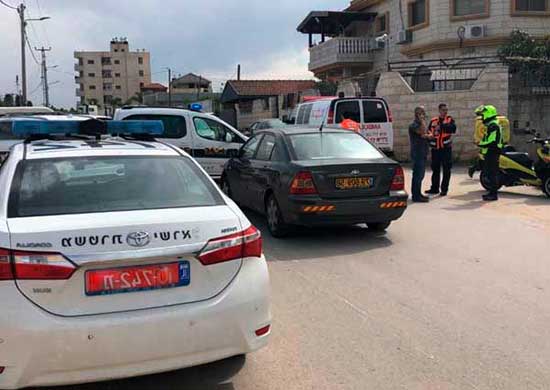
Dvir’s father—Yoav Sorek, a well-known Israeli journalist and author—described his son as “a sweet child who had light in his eyes.”To compound the family’s tragedy, Dvir’s grandfather—Holocaust survivor Rabbi Binyamin Herling—was also killed in a terror attack in October 2000.
The horrific act of violence that saw an innocent young man killed for no other reason than that he was Jewish shows the dark reality faced by our producers every day.
Yet there is something extraordinary in the Jewish soul that always seeks life, even in the face of death. That is why our producers continue designing and creating their beautiful items and why the modern-day Jewish pioneers continue to raise up and develop the land, not letting this terrible evil stop them.
Please remember the Sorek family and their community in your prayers.
7 Fascinating Facts about Jerusalem
August 12, 2019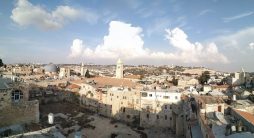
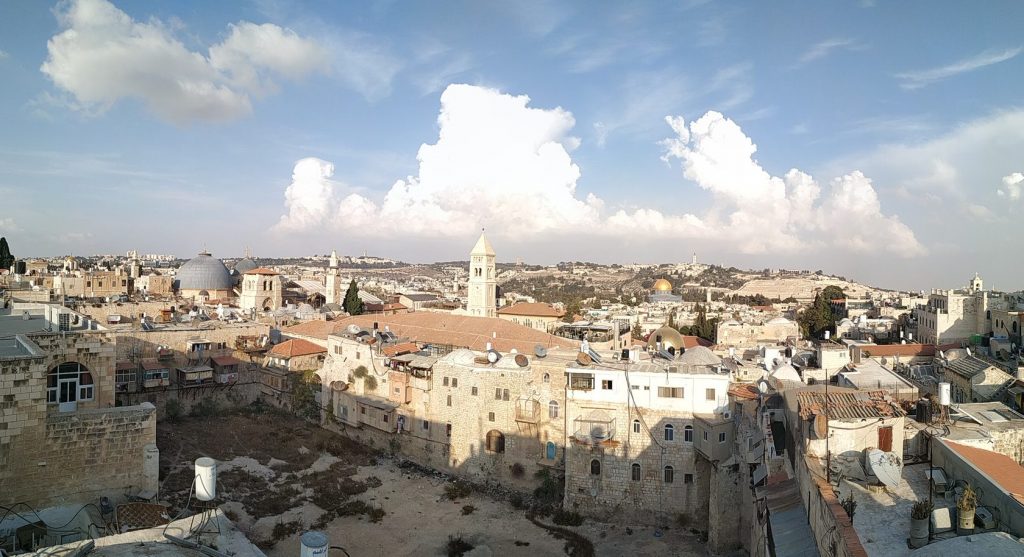
1. Studies show that there are olive trees in the Garden of Gethsemane dating back 900 years, making them some of the oldest living olive trees in the world.2. When Neil Armstrong visited Jerusalem, he said: ‘I am more excited stepping on these stones than I was stepping on the moon.’
3. Jewish people around the world face Jerusalem to pray.
4. Between 1948 and 1967 when the Old City of Jerusalem was under Jordanian control, Jews were not allowed to access their own holiest site – the Western Wall.
In 1948, the area referred to today as ‘East Jerusalem’, which includes key Jewish sites such as the ancient Jewish Quarter and Temple precinct, was captured by Jordan. In breach of the armistice agreement, Jordan restricted all Jewish access to the Western Wall. It was only after the Six Day War of 1967, when Israel liberated Jerusalem, that Jews could once again pray at the site of their holy Temple.
5. There’s a specific medical condition that some psychiatrists call ‘Jerusalem syndrome’ in which visitors to the holy city are overcome with religious delusions, such as believing they are the Messiah, Elijah or other religious figures. Fortunately, it’s a rare illness, and some doctors doubt it even exists at all!
6. Every Passover a Muslim Arab called Hussein Jaber who lives in Abu Ghosh (an Arab town next to Jerusalem known for its loyalty to Israel) buys all the leaven in the land!
According to the Torah, Jewish people should not own or have in their possession any products containing leaven for the whole week of Passover. Hussein Jaber helps the country keep this commandment by signing a formal contract to buy all the leaven in the Israel for $300 million. Of course, it’s an unspoken agreement that Jaber will not manage to settle the bill by the end of the Passover week, so the contract is annulled, and the bread returns to Jewish hands!
7. During its more than 6000-year history, Jerusalem has been conquered or reconquered over 40 times and razed to the ground at least twice.
But what is it that makes Jerusalem so passionately desired, so fiercely fought over? Why does the city generate such strong emotion?
Myths and truths about the BDS movement
August 12, 2019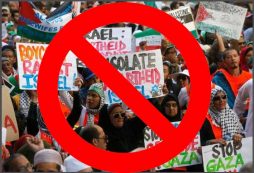
BDS (Boycotts, Divestments and Sanctions) is a movement that seeks to delegitimize Israel through economic measures such as boycotting Israeli businesses, cultural and academic institutions, particularly those operating in the so-called ‘occupied territories’, which are really the Jewish heartland of Judea and Samaria.
BDS is a movement based on myths and lies. Here are some of the false claims, and what the truth really is:
Myth 1: BDS helps ordinary Palestinian people
Truth: The BDS movement does more harm than good for Arab people living under the Palestinian Authority.
Israeli companies operating in the wrongly described ‘occupied territories’ actually benefit the local Arab population by providing employment with better salaries and work conditions than they would find in Palestinian-run companies.
When the Israeli company SodaStream became the target of BDS abuse and relocated its manufacturing headquarters from Ma’ale Adumim to southern Israel in 2015, 500 Palestinian workers lost their jobs.
When Israel withdrew all Jewish settlement from Gaza in 2005 in response to international pressure to ‘end the occupation,’ the previously flourishing fruit and vegetable trade collapsed, and the local people were subjected to poverty and terror by their own leadership.
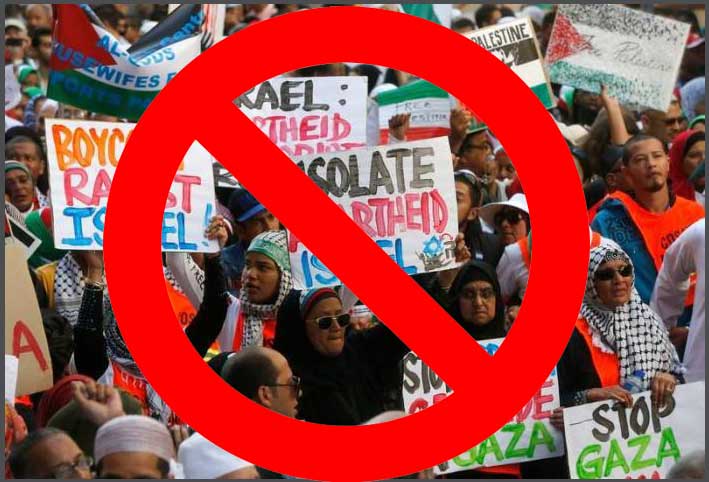
Myth 2: Israel is an apartheid state
Truth: The BDS movement is modelled on the economic sanctions applied to South Africa during the Apartheid era – a policy that contributed to the collapse of that regime. BDS likens Israel to Apartheid South Africa, using terms such as ‘segregation’ and claiming that Arab people in Israel are treated just like the black people were under the Apartheid.
In fact, there is simply no comparison between modern day Israel and Apartheid South Africa. There are no ‘Jews only’ buses on the city streets. And any trip to an Israeli hospital will show you that not only do Jews, Arabs and every other people group in the country receive the same excellent level of medical care, but the specialist doctors and consultants working in these hospitals are just as likely to be Arab as Jewish.
Myth 3: The BDS movement arose from a Palestinian cry for justice
Truth: The BDS movement claims that it was borne out of a call issued in 2005 by a broad group of Palestinian individuals, businesses, NGOs and welfare organizations, imploring the worldwide community to enforce economic measures against Israel.
This isn’t true. BDS can be traced back to an NGO forum held in Durban, South Africa in 2001 as part of the ‘World Conference against Racism.’ Far from tackling real issues of racism around the world, this forum was characterized by anti-Semitism and hatred of Israel. In its final declaration, it described Israel as an apartheid state and called for ‘a policy of complete and total isolation of Israel…the imposition of mandatory and comprehensive sanctions and embargoes, the full cessation of all links… between all states and Israel.’
Far from being a Palestinian cry for help, the BDS movement was created by international NGOs for their own political and anti-Semitic motives.
In view of these facts, why would anyone seriously think that BDS could be a force for good in the region?
Archaeologists Discover Biblical City of Ziklag
August 12, 2019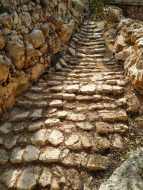
In yet another archaeological find that confirms the biblical account of events, experts believe they have uncovered the ancient city of Ziklag.
Ziklag was the city that the king of the Philistines gifted to David when he fled from Saul and took refuge amongst the Philistines in Gath (1 Samuel 27). The Bible says that Ziklag, previously a Philistine city, remained in Jewish hands from then on. On one occasion, while David was away from Ziklag, the Amalekites invaded, burnt the city to the ground and took David’s wives and animals captive. David pursued the Amalekites, ambushed them and took back his wives and property (1 Samuel 30).
Later, Ziklag is mentioned as one of the towns of Judah that the Jewish people who returned with Nehemiah from Babylonian exile resettled (Nehemiah 11:28).
Until recently, the exact location of Ziklag remained unknown and about 12 different possibilities were put forward by various experts. But that all changed earlier this month.
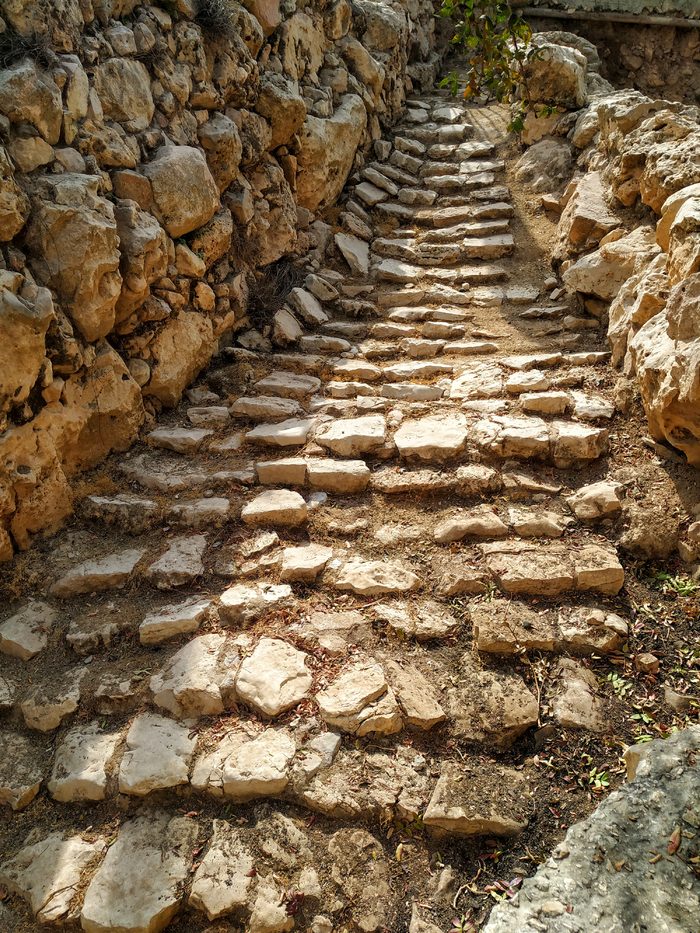
During a joint press release, researchers from the Hebrew University in Jerusalem, the Israel Antiquities Authority and Macquarie University in Sydney, Australia claimed to have found the ancient city.In 2015, archaeologists began an excavation at the site of Khirbet a-Ra’i in the Judean foothills, between the ancient sites of Gath and Lachish, and uncovered evidence of ancient continuous settlement.
There were several factors that stood out during the dig that led the team to conclude with a high degree of certainty that this was in fact biblical Ziklag.
Firstly, they found evidence of a Philistine settlement from the 11th to 12th centuries BCE. Items such as bowls and oil lamps were discovered in the foundations of the buildings, which point to the Philistine custom of laying offerings to the gods beneath the floor of a new building to bring blessing and favor. Utensils such as stone and metal tools were also found, which were similar to those found in other Philistine towns from the same period.
Above the remains of the Philistine settlement, archaeologists found evidence of an early 10th century Jewish town, which equates to the time of King David. Nearly 100 pottery vessels were uncovered, which would have been used to hold oil or wine, and which were identical to vessels found in the neighboring Judean city of Sha’arayim.
The settlement’s transition from Philistine to Judean hands matches the biblical account of 1 Samuel, where King Achish of the Philistines gives David the town, and he settles there with his household.
Even more remarkably, the research team found evidence of a massive fire during the period when the town was in Jewish hands, which fits the biblical description of the Amalekite raid.
So, are these archaeological findings just a strange coincidence, or do they point to the fact that King David was a real historical figure who truly did take refuge with the Philistines and settle in the town of Ziklag?
Senior US diplomats join Israeli leaders to open site of excavated Jewish road in East Jerusalem
July 9, 2019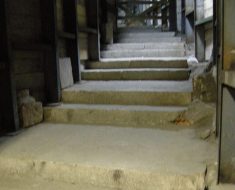
While many around the world are trying to airbrush Jewish history from Jerusalem, particularly from the contested eastern side, archaeological findings continue to confirm its deep Jewish connection.
One remarkable discovery made in recent times was a Jewish road dating back over 2000 years to the days of Herod. This road connected the major holy sites for Jewish pilgrims in temple times, including Temple Mount, the City of David and the Pool of Siloam.
The pilgrims’ road may have been hidden forever had it not been for a burst water pipe in 2004, some distance from the site of the temple. The city’s maintenance workers were accompanied by an archaeologist as they carefully started breaking up the ground to access the pipe. However, the team were soon told to stop digging when the archaeologist noticed some unusual stonework beneath the ground. It turned out to be part of a stone staircase from the biblical Pool of Siloam.
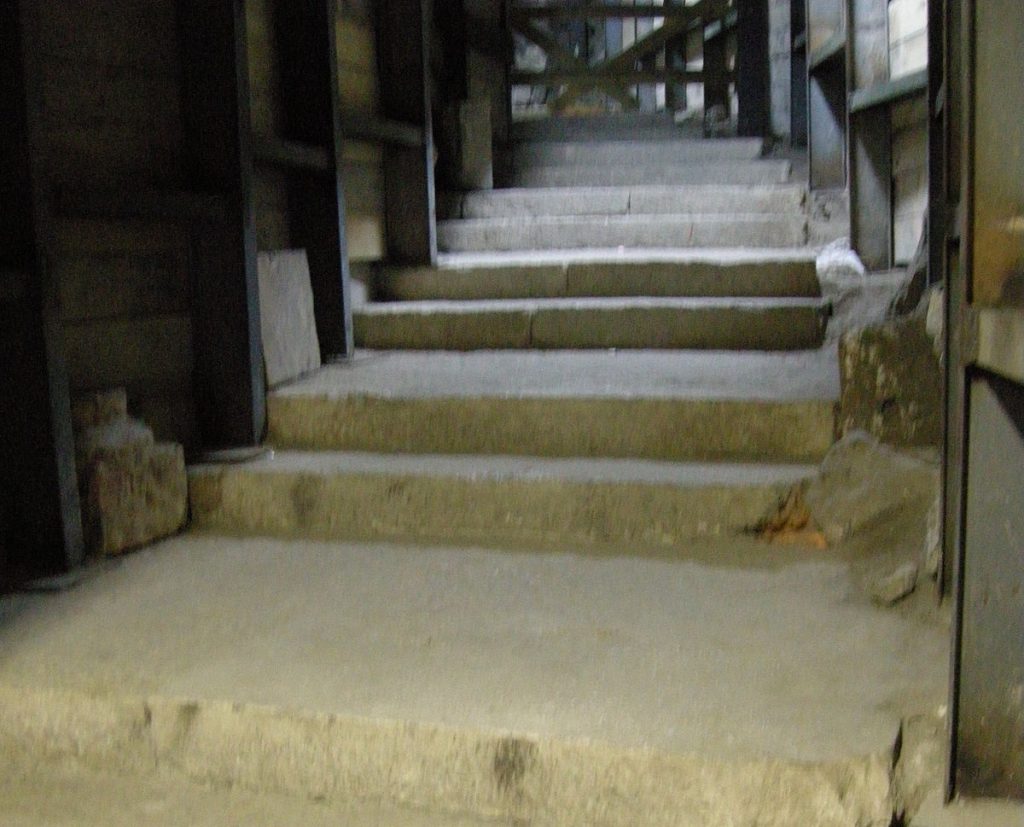
Following this discovery, archaeologists started exploring the adjacent area, and it wasn’t long before they found the entrance to the pilgrims’ road.Excavating this ancient road was a feat of modern engineering. The excavation team knew they couldn’t close off the Old City or the East Jerusalem neighborhood of Silwan in order to carry out a traditional dig. So, they worked underground while the hustle and bustle of Jerusalem life went on in the streets above them. They had to use special fibrotic cable cameras to decide where to dig, and a team of engineers worked to ensure the ground around the excavation was strong enough to support the people and buildings above.
The official opening ceremony for the pilgrims’ road was held on June 30, 2019 after 8 years of excavation. In a bold display of solidarity with Israel and the Jewish right to be in Jerusalem, two top US diplomats – Middle East envoy Jason Greenblatt and US ambassador to Israel David Friedman – attended the event.
Speaking at the ceremony, Friedman addressed Trump’s recent decision to move the US embassy to Jerusalem: ‘Were there any doubts about the accuracy, the wisdom, the propriety of President Trump recognizing Jerusalem as the capital of Israel, I certainly think this lays all doubts to rest.’
The incredible discovery of this pilgrims’ road raises the question: What other structures and artefacts from temple times are hiding beneath the stones of the ancient Jewish city of Jerusalem?
Beit El
June 19, 2019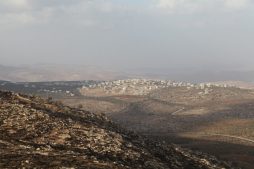
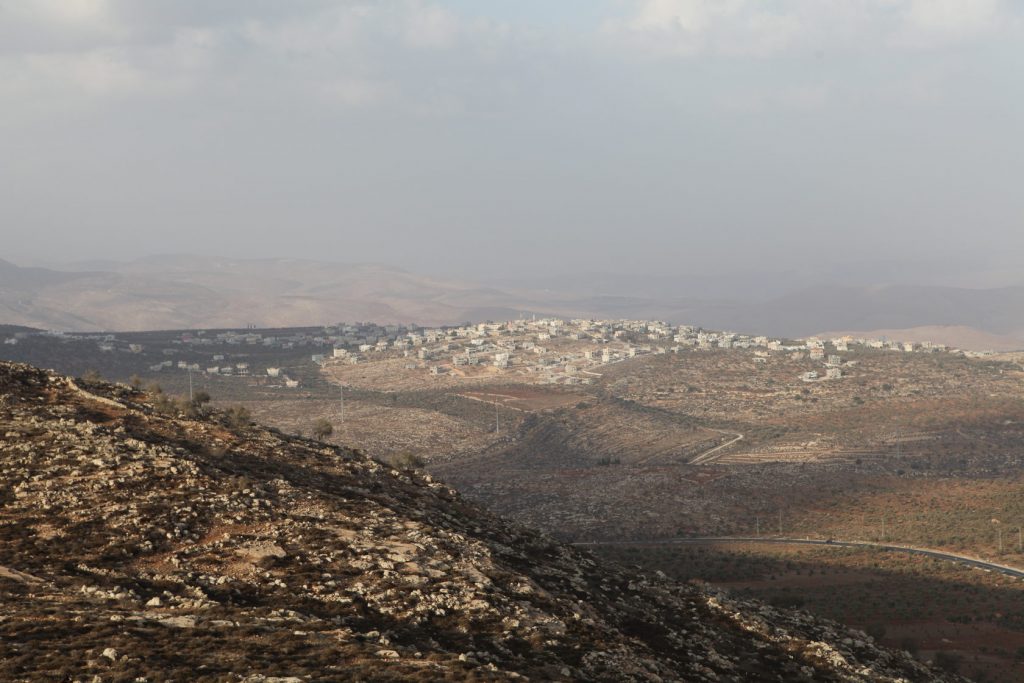
Beit El (meaning ‘House of God’) is a community in the heart of Samaria, to the north of Jerusalem.
Its connection to the Jewish people dates back to the days of the Patriarchs when Abraham built an altar to the Lord there after G-d covenanted that his descendants would be a great nation and inherit the Land of Israel (Genesis 12:8).
Later, it was at Beit El (often called Bethel in the Bible) that Jacob had his famous vision of a ladder up to heaven with angels ascending and descending on it (Genesis 28:12). Here, the Lord confirmed the covenant He had made with Jacob’s grandfather, Abraham.
Biblical and archeological evidence reveals a Jewish presence in Beit El throughout the centuries. The town prospered during the reigns of David and Solomon, and in the days of Elijah a school of prophets existed there. Archeological remains point to a flourishing Jewish town during the period of the Maccabees.
In modern times, Beit El was one of the first communities in Judea and Samaria to regain a Jewish presence after the Six Day War of 1967. A courageous group of Jewish pioneers set out in 1977, just like Abraham nearly 4000 years earlier, and set up camp on the rugged mountain terrain of ancient Beit El, so fulfilling the prophecy given to their ancestors on that very site.
The community has come a long way since those early days with no electricity or running water, cooking food and trying to keep warm using simple gas stoves. Beit El now boasts a population of nearly 7000 people with thriving cultural, educational and religious institutions.
If you visit Beit El today, you may be forgiven for thinking you have stepped back in time to a world more innocent than today. This unspoiled hillside community where children play outside, and signs warn drivers to be careful of them feels like a little oasis.
Yet the reality is that this idyllic picture exists against a backdrop of danger. Beit El is surrounded by six hostile Arab villages that want to erase the Jewish presence from this biblical town. The threat of violence is never far away.
What’s more, Beit El’s many skilled artisans and producers, making everything from sheep’s wool blankets to fine wine are facing economic hardship due to the effects of the BDS movement.
Some may ask whether the covenant G-d made with Abraham thousands of years ago, and confirmed with Jacob, still stands today. But for the Jewish families living on the front line in Beit El, risking their lives to dwell in the land promised to their ancestors, their faith in G-d’s covenant is as sure as the rocks they’re standing on.
